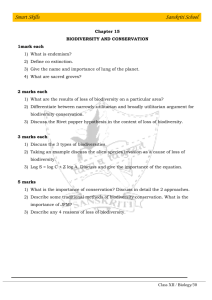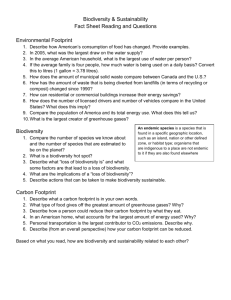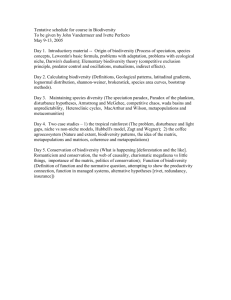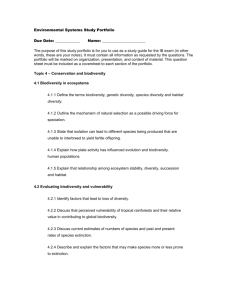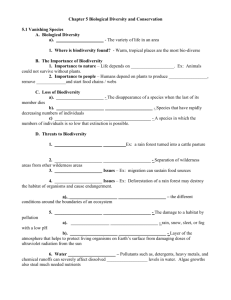University of Kentucky
advertisement
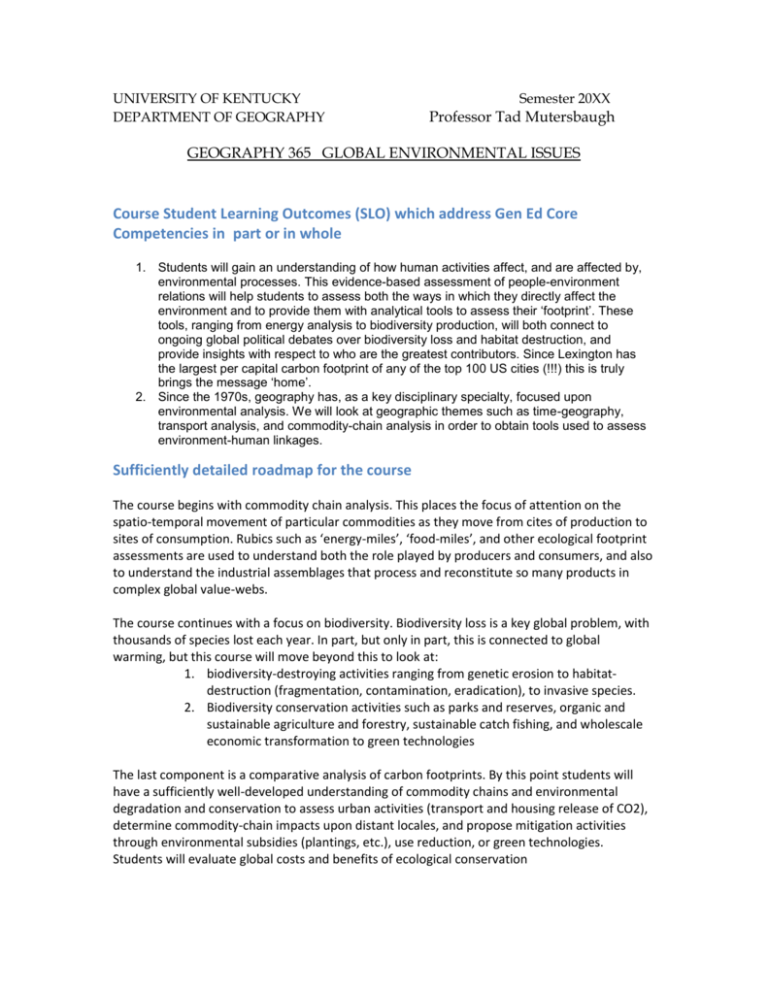
UNIVERSITY OF KENTUCKY DEPARTMENT OF GEOGRAPHY Semester 20XX Professor Tad Mutersbaugh GEOGRAPHY 365 GLOBAL ENVIRONMENTAL ISSUES Course Student Learning Outcomes (SLO) which address Gen Ed Core Competencies in part or in whole 1. Students will gain an understanding of how human activities affect, and are affected by, environmental processes. This evidence-based assessment of people-environment relations will help students to assess both the ways in which they directly affect the environment and to provide them with analytical tools to assess their ‘footprint’. These tools, ranging from energy analysis to biodiversity production, will both connect to ongoing global political debates over biodiversity loss and habitat destruction, and provide insights with respect to who are the greatest contributors. Since Lexington has the largest per capital carbon footprint of any of the top 100 US cities (!!!) this is truly brings the message ‘home’. 2. Since the 1970s, geography has, as a key disciplinary specialty, focused upon environmental analysis. We will look at geographic themes such as time-geography, transport analysis, and commodity-chain analysis in order to obtain tools used to assess environment-human linkages. Sufficiently detailed roadmap for the course The course begins with commodity chain analysis. This places the focus of attention on the spatio-temporal movement of particular commodities as they move from cites of production to sites of consumption. Rubics such as ‘energy-miles’, ‘food-miles’, and other ecological footprint assessments are used to understand both the role played by producers and consumers, and also to understand the industrial assemblages that process and reconstitute so many products in complex global value-webs. The course continues with a focus on biodiversity. Biodiversity loss is a key global problem, with thousands of species lost each year. In part, but only in part, this is connected to global warming, but this course will move beyond this to look at: 1. biodiversity-destroying activities ranging from genetic erosion to habitatdestruction (fragmentation, contamination, eradication), to invasive species. 2. Biodiversity conservation activities such as parks and reserves, organic and sustainable agriculture and forestry, sustainable catch fishing, and wholescale economic transformation to green technologies The last component is a comparative analysis of carbon footprints. By this point students will have a sufficiently well-developed understanding of commodity chains and environmental degradation and conservation to assess urban activities (transport and housing release of CO2), determine commodity-chain impacts upon distant locales, and propose mitigation activities through environmental subsidies (plantings, etc.), use reduction, or green technologies. Students will evaluate global costs and benefits of ecological conservation Narrative: How assignments build on each other This is explored above. Narrative: How assignments achieve Gen Ed Core Competencies These will provide students with critical analytical tools that will help them to meet future life challenges and become a competent global citizen by better understanding the global impact of local actions and the importance of addressing, both personally and politically, the consequences of individual and collective action. Students will develop arguments to address global debates on the future of habitats and the ethical relation among humans and between humans and non-human species. List of Support Materials: http://www.uky.edu/~tmute2/GEI-Web/



